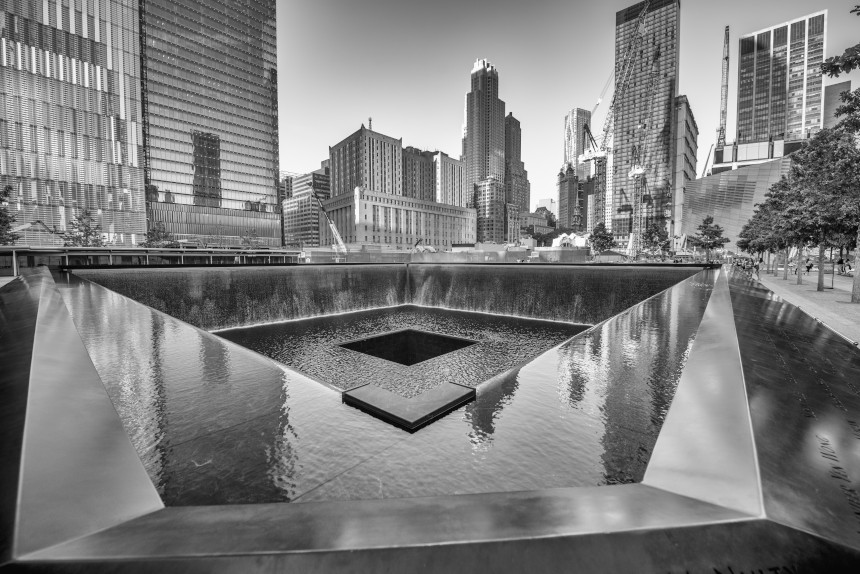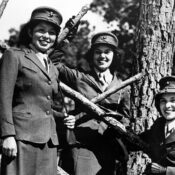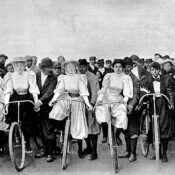This series by American studies professor Ben Railton explores the connections between America’s past and present.
The upcoming 20th anniversary of the September 11, 2001, terrorist attacks offers an occasion for remembrance of all the lives lost and individuals, families, and communities affected by those attacks and their aftermath. Those stories have continued to echo for the two decades since the attacks, as illustrated with poignancy by Jennifer Senior’s article for The Atlantic’s September issue on one family’s 9/11 tragedy and continued struggles. The ongoing fight to take adequate care of the first responders likewise reflects the need for continued remembrance and action.
Yet the further we get from an event, the more our remembrances should be complemented by reflection and analysis — to focus not only on what happened, but also on the lessons that such a historical event can teach us. Those stories can be told not just in journalism and scholarship, but also by cultural works across all genres and media: from Bruce Springsteen’s album The Rising (2002) to Jonathan Safran Foer’s novel Extremely Loud & Incredibly Close (2005), to Martín Espada’s poem “Alabanza” (2003) to Oliver Stone’s film World Trade Center (2006), and many more. While most of those works were of course released in the aftermath of September 11th, some that preceded the attacks likewise help us engage with crucial 9/11 contexts, such as a largely forgotten film released three years before the attacks: The Siege (1998). [Extensive SPOILERS for the film are in the remainder of this column.]
The Siege was the third film in which director Edward Zwick had teamed up with star Denzel Washington, after Glory (1989) and Courage under Fire (1996). Both of those are war movies, and The Siege was likewise marketed as a war movie, but this time one where the war comes home to the U.S.
The film tells a fictional but realistic story of an escalating and horrific series of terrorist attacks on New York City, committed by members of a radical Islamic terrorist organization in response to perceived political affronts and aggression in the Middle East, to which FBI agent Anthony Hubbard (Washington) and his team have to respond.
Those events are indeed central to the film, and make it a prescient portrayal of the “War on Terror” years before that phrase was coined by President George W. Bush in the aftermath of the September 11th attacks. But at the same time, the world of The Siege is far more complex and multi-layered than that of a war story, and specifically of the simplifying “us vs. them” frame that such stories often utilize. Indeed, the film depicts much more of a civil conflict, one between multiple competing forces within the United States and one that likewise foreshadows contexts and lessons of 9/11.
The first such conflict is between Washington’s character and Annette Bening’s CIA agent Elise Kraft over how to respond to and investigate the attacks. But Kraft gradually reveals a longstanding and far deeper relationship to the terrorists, who (very much like Osama Bin Laden and his Al Qaeda network) were Afghan freedom fighters trained and armed by the CIA (including Kraft herself) to fight the Soviets. These freedom fighters were ultimately abandoned by the U.S. at the end of the Cold War. Moreover, in the film’s present, Kraft is literally in bed with one of the attackers, a young student named Samir who she believes is an informer but is really one of the terrorist cell’s leaders. In the film’s geopolitical world, as was genuinely the case not only with Afghanistan but also with Iraq, Iran, and so many other 20th century settings, the CIA’s and U.S. government’s clandestine and likely illegal actions directly contributed to the ongoing political and social blowback of which such terrorist attacks are a part.
This most fundamental conflict isn’t between what the U.S. is and what we might be if we take the wrong path, but rather between what we should be and what we far too often have been.
While Samir is a Muslim American character who turns out to be part of the terrorist network, the film’s other prominent Muslim American character, Tony Shalhoub’s FBI Agent Frank Haddad, experiences a far different and even more American civil conflict. Haddad, who is Hubbard’s partner and a lifelong and dedicated civil servant, finds himself and his family caught up in the aftermath of the terrorist attacks, when his son is one of tens of thousands of Muslim American young men detained without cause by the U.S. military in internment camps. These camps represent not just the contested response to the terrorist attacks, but also an even more fundamental question of how to perceive and treat all Muslim Americans. The concept of Muslim internment, itself an echo of World War II Japanese internment camps, was indeed proposed in the aftermath of 9/11 and multiple times across the subsequent decades. And while such a program was not fully enacted, it clearly parallels the early 2000s Islamophobia which drove both extensive surveillance programs and the rise in hate crimes.
The film’s internment camps are set up and run by Bruce Willis’s General William Devereaux, an arrogant and dictatorial military leader whose conflicts with Washington’s character Hubbard comprise the movie’s final and most defining civil conflict. In the film’s most powerful single moment, Hubbard delivers an impassioned monologue (to both Devereaux and Kraft) about the true goal of terrorism: to change a society, to push a nation to abandon its ideals (“shred the Constitution just a little bit”) and become no better than the worst of its adversaries. But of course, American history includes countless examples of such abandonments, not only those undertaken in response to foreign attacks like Japanese internment after Pearl Harbor, but also internal laws like the 1918 Sedition Act and military actions like the 1890 Wounded Knee Massacre. This most fundamental conflict isn’t between what the U.S. is and what we might be if we take the wrong path, but rather between what we should be and what we far too often have been. There’s no more potent historical and contemporary lesson we could take away from The Siege and 9/11 alike.
That lesson isn’t only about our collective past — it’s also an impetus for critical patriotism in the present and future. More fully and thoughtfully engaging with the moments and ways where the nation has fallen short of its ideals is the first step in expressing such critical patriotism. But the vital next step is to help push America closer to those ideals: toward a foreign policy that supports human rights and equality under the law around the world, toward a political and legal system in the U.S. that makes sure the Constitution is truly upheld for all Americans, and toward a response to our most horrific days that reinforces our deepest values of diversity and community.
Featured image: GagliardiPhotography / Shutterstock.com
Become a Saturday Evening Post member and enjoy unlimited access. Subscribe now



